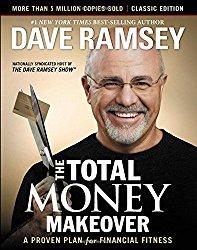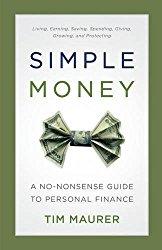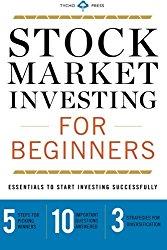Let's face it - welfare just isn't working. There is a lot of money being spent, but a lot of it is being wasted, to the point that kids are showing up at school hungry despite all of the food assistance money being sent to their households. The issue is the same one that is always seen when you try to run something through central planning - those setting up the program don't have the ability or the time to customize it for every person or region, so they create something that really doesn't work for everyone. In addition, the power created through centralization leads to fraud and abuse. We need a better way to do welfare.
Some people are incapable of taking care of themselves and therefore need to be handed food, clothing, shelter, etc.... Others could take care of themselves but choose to game the system instead, taking resources from those who really need help (for example, those who abuse Medicaid to abuse prescription pain medications, making it more difficult for those who need the medications to get treatment) . Rather than a check in the mail or an Obamaphone, many people really need a firm but caring "no" and perhaps an offer of something like a job or job training to get them back on track and being productive (and happier in the long run). Some parents are struggling and sacrificing for their children and just need a little help to make ends meet, but others just ignore the children and spend all of the money on themselves. Others have addictions, where giving them money just helps buy the next shot of heroin or fifth of whiskey. A centralized program, with an army of government workers who quickly have any desire to change the system beaten out of them, gives you what we have: fraud, waste, abuse, and a lot of hoops for those who really need help to jump through.







The Conservative's welfare program would rely on free-enterprise. There would be a plethora of well-funded local groups that provide food, shelter, job training, and other assistance to those in need. Because they were local, they could learn who really needs help and what kind of help is needed, be it a sandwich or a connection to a next job. These groups would compete for donations by showing the good works they were doing. Those who were effective at meeting needs would grow and receive more donations. Those who were wasteful and ineffective would go out-of-business. People could decide what was needed and direct their donations there. If something got over-funded, to the point people for the charity were building palatial offices, people would donate somewhere else.
The issue with going to such a system is converting from what we have now. Because people are already having a good portion of their tax dollars, on the order of 50%, going to welfare, it would be difficult for them to give additional money to charities (although a lot of them do). It is also difficult to eliminate existing programs in order to cut taxes to allow for more private giving because there are always tragic cases for those that want to keep the power in Washington to parade in front of the cameras. Luckily, there is a simple solution, and it would require very little effort.
Here's the plan:





Shop the latest clothing and accessories

Allow individuals to deduct their contributions to charities that provide services that replace government programs (food, shelter, job training, clothing, health care, etc...) directly from their taxes, dollar-for-dollar, up to 10% of their income. Then, as the needs in different areas are met by private charities, discontinue the government programs, keeping them in place in areas where the needs are not met.
Right now, individuals are taxed, their money taken to Washington. Washington bureaucrats making high six-figure incomes then hire an army of civil servants making high five-figure incomes to disperse the money they collect to programs such as food stamps and section-8 housing/HUD. A lot of the money collected is lost in the process, plus the money is not distributed efficiently, resulting in bad results and/or an enormous cost.
Advantages:By allowing individuals to give the money directly, which they would do if given the choice of giving it to causes they believe in or sending it off to Washington, groups that meet the needs of the poor and disadvantaged would be funded. Because more money would be available, more groups would be developed and compete for funding by trying to do the most good at the least cost. By limiting the amount that could be given, there would still be funding for things like Defense and essential government processes.
- There would be more money available for the needy since there would be less waste. Wasteful charities would change their ways or go out-of-business as more efficient competitors emerged.
- People would be helped locally, meaning the charities would be designed to meet their needs, rather than some global need. We'd see things like families being provided directly with food that met their dietary requirements rather than a check being sent to the home that gets spent on cigarettes and lottery tickets.
- There would be enough different groups and people working within those groups to determine how to best meet the needs of those around them and actually improve society. Imagine the minds who create things like the smart phone and FaceBook working on addressing the needs of society!
- Needs currently not being met would be addressed as individuals looked for new charities to start once the space for things like food and housing became crowded. Maybe there would be groups who drive people to job interviews or help those who are victims of crime right after they are robbed or assaulted.
- Taxes could be lowered as needs were addressed more efficiently.
- Those who are able to take care of themselves would be transitioned into productive members of society with an income, which in turn would further reduce the burden on those currently paying for welfare. It would also bring pride back to people, which could change futures and neighborhoods.
- Payers would feel good about their donations rather than feeling bad about needing to pay taxes. There might be less tax-cheating.










Shop for camping and hiking supplies

So in the end, we would all pay less in taxes, there would be more people working and producing things, which would make society wealthier, people would be seeing their needs met more efficiently and with less red-tape, and we would end the cycle of poverty, bringing pride to individuals. If this sounds good, forward a link to this post to a friend or your FaceBook page. Then, write your Congressman and your local newspaper. We can make society better if we all work together for change.
Follow me on Twitter to get news about new articles and find out what I'm investing in. @SmallIvy_SI


Disclaimer: This blog is not meant to give financial planning or tax advice. It gives general information on investment strategy, picking stocks, and generally managing money to build wealth. It is not a solicitation to buy or sell stocks or any security. Financial planning advice should be sought from a certified financial planner, which the author is not. Tax advice should be sought from a CPA. All investments involve risk and the reader as urged to consider risks carefully and seek the advice of experts if needed before investing.
